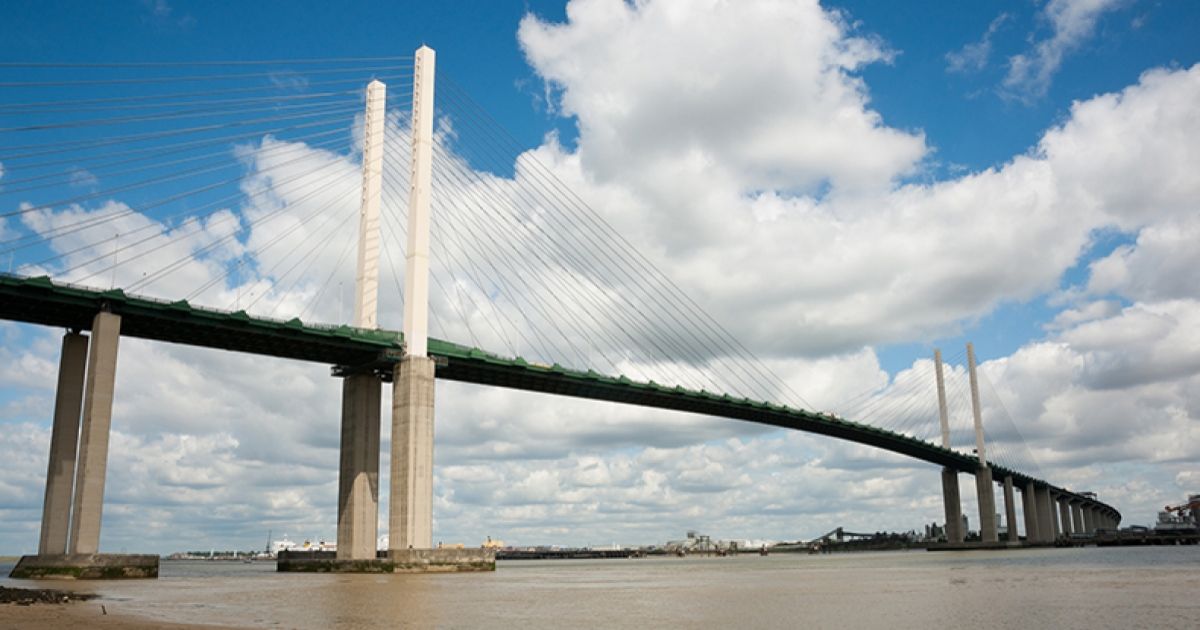The Dartford Crossing, spanning the River Thames east of London, is a critical link in the UK’s road network. Comprising the Queen Elizabeth II Bridge and two tunnels, it connects Kent and Essex via the M25, one of Europe’s busiest motorways.
The toll system, commonly referred to as the Dart Charge, is vital for maintaining the crossing, managing traffic, and supporting future infrastructure development.
What is the Dart Charge?
The Dart Charge is a fee drivers must pay to use the Dartford Crossing. Initially introduced in 1963 to recover construction costs, the toll has since become an essential tool for funding ongoing maintenance and reducing congestion. Payment is managed electronically through the Dart Charge system, which eliminates toll booths, allowing traffic to flow more efficiently.
To avoid penalties, drivers must pay the charge in advance or by midnight the day after using the crossing. Failure to pay results in fines, ensuring compliance. Charges vary depending on vehicle type:
- Cars: £2.50
- Two-axle goods vehicles: £3.00
- Multi-axle heavy goods vehicles: £6.00
- Motorcycles and disabled motorists using adapted vehicles are exempt.
Why is the Dart Charge Important?
1. Funding Maintenance and Upgrades
The Dartford Crossing handles over 50 million crossings annually. This high usage requires regular maintenance and safety upgrades, funded by toll revenue. These funds ensure the crossing remains safe and operational for all users.
2. Reducing Traffic Congestion
As one of the busiest stretches of road in the UK, the Dartford Crossing is prone to congestion. The Dart Charge helps manage demand by encouraging drivers to consider alternative routes or travel times, reducing delays and improving traffic flow.
3. Environmental Benefits
By discouraging unnecessary trips and promoting more efficient use of the crossing, the toll helps reduce vehicle emissions. Revenue from the toll can also support environmentally friendly transport initiatives in the region.
4. Encouraging Public Transport and Car Sharing
The toll indirectly incentivizes the use of public transport and car-sharing, alleviating pressure on the crossing. Government initiatives are exploring ways to integrate public transport options more effectively in the area.
Criticisms and Challenges
While the Dart Charge has clear benefits, it also faces criticism. Some argue the toll should have been removed in 2003, once the construction costs were recouped. Frequent users and businesses relying on the crossing often highlight the financial strain.
Technological issues with the Dart Charge system, such as erroneous penalty notices and challenges for occasional users, particularly tourists, remain common complaints. Questions have also been raised about whether toll revenue is adequately reinvested into improving the crossing and nearby infrastructure.
How to Pay Dart Charge
Paying the Dart Charge is straightforward, but it’s essential to complete the payment on time to avoid penalties. Here’s how you can pay dart charge:
1. Online via the Dart Charge Website
– Visit the official Dart Charge website.
– Create an account or log in to your existing account.
– Enter your vehicle registration and payment details.
2. Using the Dart Charge App
– Download the Dart Charge app on your smartphone.
– Sign up or log in, and follow the prompts to make a payment.
3. At Retail Locations
– Payments can be made at Payzone locations in convenience stores or petrol stations. Simply provide your vehicle registration number to the cashier.
4. By Phone
– Call the Dart Charge customer service line and follow the instructions to make a payment over the phone.
5. Set Up Auto Pay
– For regular users, setting up Auto Pay ensures you never miss a payment. Your account is automatically charged whenever you use the crossing.
Important Points to Remember
- Payments must be made in advance or by midnight the day after crossing.
- Failure to pay on time results in a Penalty Charge Notice (PCN).
- Motorcyclists and exempt vehicles (e.g., specially adapted vehicles for disabled users) do not need to pay.
By following these steps, you can ensure compliance with the Dart Charge system and avoid unnecessary fines.
Looking Ahead
With traffic volumes expected to grow, the Dartford Crossing’s role will become increasingly vital. The planned Lower Thames Crossing aims to ease the pressure on the Dartford Crossing, but its completion is years away. Until then, the Dart Charge will continue to play a central role in ensuring smooth operations and funding future developments.
Conclusion
Paying the Dart Charge is essential for maintaining one of the UK’s most important transport links. By funding maintenance, managing traffic, and promoting sustainable travel, the system ensures the Dartford Crossing can meet the needs of millions of users annually. While challenges persist, the Dart Charge remains a balanced solution for supporting critical infrastructure and addressing the growing demands of road users.
